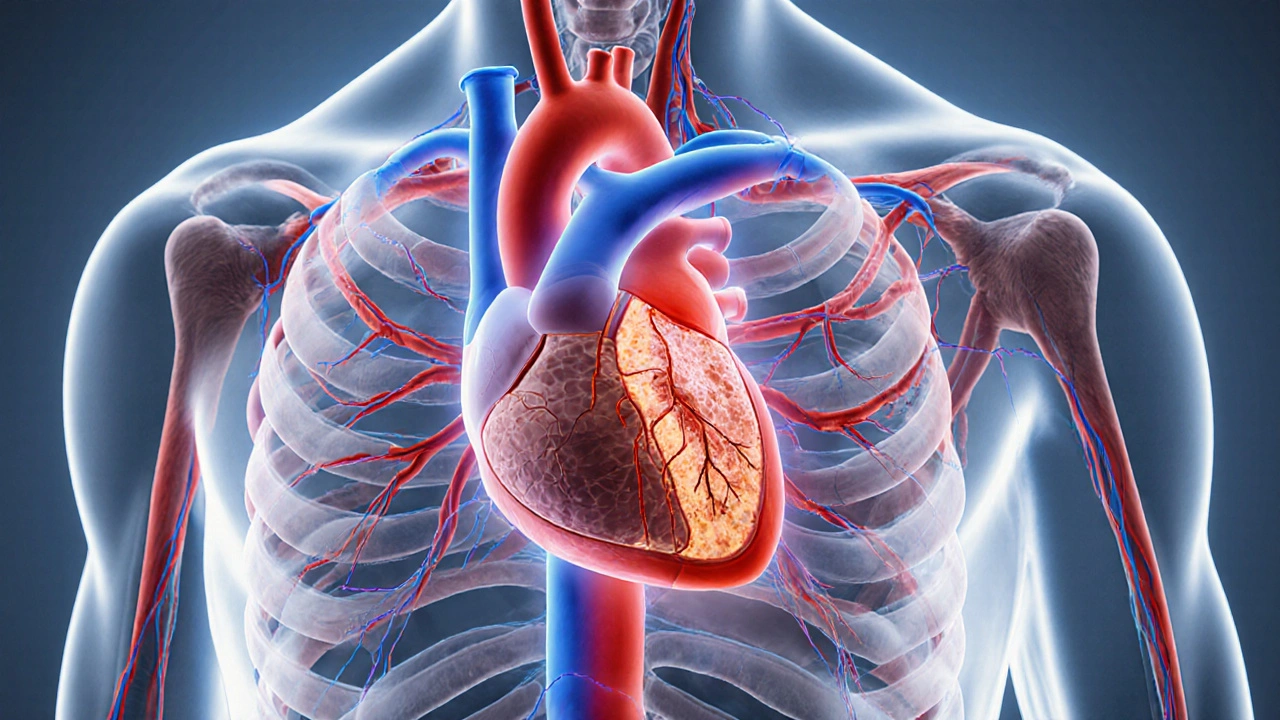Types of Angina: A Straightforward Guide
When working with types of angina, the medical categories that describe chest pain caused by reduced heart blood flow. Also known as angina classifications, it helps doctors decide on treatment and patients understand their risk. The three classic categories are stable angina, pain that occurs predictably with exertion and eases with rest or nitroglycerin, unstable angina, chest discomfort that shows up at rest, lasts longer, and signals an impending heart attack, and variant (Prinzmetal) angina, a spasm‑driven pain that often occurs at night and responds to calcium‑channel blockers. Some clinicians also talk about microvascular angina, a form linked to small‑vessel disease, but the big three cover most cases you’ll encounter in practice.
Why These Categories Matter
All three types of angina share the same root problem: coronary artery disease, the buildup of plaque that narrows the arteries feeding the heart muscle. When plaque limits blood flow, the heart reacts with pain signals. Knowing whether the pain is stable, unstable, or variant tells you how urgent the situation is. Stable angina usually means you can manage symptoms with lifestyle tweaks and meds, while unstable angina demands immediate emergency care. Variant angina, on the other hand, points to arterial spasm rather than blockage, so doctors often choose different drug classes. Chest pain patterns also guide diagnostic tests – treadmill stress tests work well for stable cases, whereas unstable patients get early coronary angiography.
Beyond the plaque, other factors influence which type shows up. Diabetes, high blood pressure, and smoking accelerate atherosclerosis, making unstable episodes more likely. Stress hormones can trigger coronary spasm, pushing someone toward variant angina. Age and gender play roles too; women sometimes experience microvascular angina, where the larger arteries look clear but tiny vessels are dysfunctional. Understanding these nuances lets you tailor prevention: smoking cessation, blood‑sugar control, and regular exercise lower plaque growth, while stress‑reduction techniques may curb spasm‑related attacks.
When you know the specific type, treatment becomes precise. Stable angina often responds to beta‑blockers, nitrates, and exercise rehab. Unstable angina may need antiplatelet drugs, anticoagulants, and possibly urgent revascularization. Variant angina is best managed with calcium‑channel blockers and long‑acting nitrates. Across the board, a heart‑healthy diet, weight management, and routine check‑ups keep the underlying coronary artery disease in check. Below you’ll find a curated selection of articles that dive deeper into each angina type, discuss diagnostic tools, and share practical tips for living with or preventing chest pain.
Learn the four main types of angina, their symptoms, triggers, and when to seek help. Get clear guidance on recognizing chest pain and managing each form effectively.
